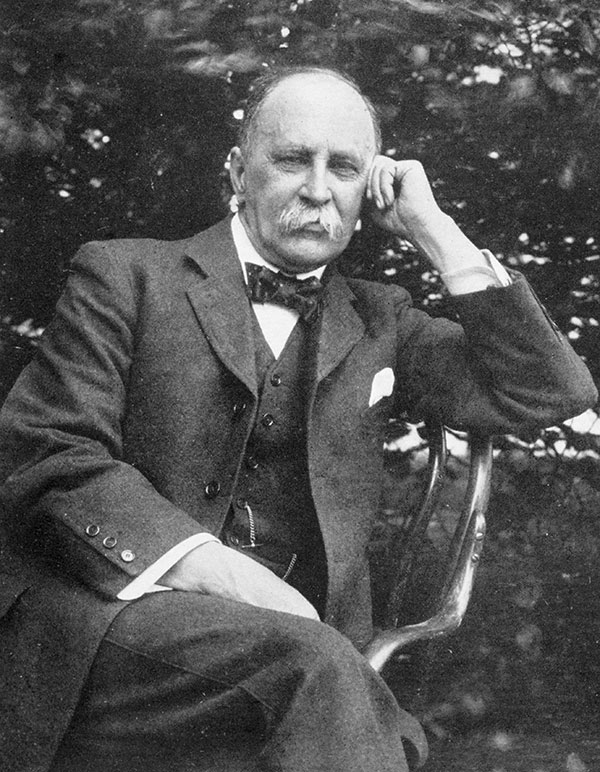Sir William Osler, the great physician and bibliophile, recommended that his students should have a non-medical bedside library that could be dipped in and out of profitably to create the well rounded physician. Some of the works mentioned by him, for example Religio Medici by Sir Thomas Browne is unlikely to be on most people’s reading lists today. There have been several recent initiatives in medical schools to encourage and promote the role of humanities in the education of tomorrow’s doctors. Literature and cinema has a role to play in making doctors more empathetic and understanding the human condition.
My idiosyncratic choice of books is as follows.
Firstly, I start with a work by the most respected physician of the twentieth century, Sir William Osler himself. The work I choose is Aeqanimitas, published in 1905 and is a collection of essays and addresses to medical students and nurses with essays ranging in title from “Doctor and Nurse,” “Teacher and Student,” “Nurse and Patient,” and “The Student Life”. They are as relevant today as the day they were penned with a prose style combining erudition and mastery of language rarely seen in practicing physicians. Osler was the subject of the great biography, written by the famous neurosurgeon Harvey Cushing, who was to win a Pulitzer prize for his efforts. (I am not including this biography on my list, however.)
Anton Chekhov is included in my list for his short stories ( he was also a successful playwright). Chekhov was a qualified Russian doctor who practiced throughout his literary career, saying medicine was his lawful wife and literature his mistress. In addition to a cannon of short stories and plays, he was a great letter writer with the letters, written primarily while he traveled to the penal colony in Sakhalin. He was so moved by the inhumanity of the place, that these letters are considered to be some of his best. Chekhov succumbed to tuberculosis and died in 1904, aged only 44 years.
William Somerset Maugham, the great British storyteller was once described by a critic as a first rate writer of the second rank. Maugham suffered from club foot and was educated at the King’s School, Canterbury, and St. Thomas’s hospital, London where he qualified as a doctor. His first novel Liza of Lambeth, published in 1897 describes his student experience of midwifery work among the slums of Lambeth led him to give up medicine and earn a living writing. He became a prolific author of novels, short stories, and plays. His autobiographical novel Of Human Bondage describes his medical student years at St. Thomas’s Hospital. Many of his stories and novels were turned into successful films.

Another medical student from the United Guy’s and St. Thomas’s Hospital who never practiced as a doctor ( although he walked the wards of Guy’s Hospital and studied under the distinguished surgeon Astley Cooper), was John Keats, who lived a tragically short life, but became one of the greatest poets of the English language. His first poem “O Solitude,” published in The Examiner in 1816, laid the foundations of his legacy as a great British Romantic poet. Poems the first volume of Keats verse was not initially received with great enthusiasm, but today his legacy as a great poet is undisputed. Keats died, aged 25, of tuberculosis.
Oliver Wendell Holmes, the famous North American nineteenth-century physician, poet and writer, and friend and biographer of Ralph Waldo Emerson, popularized the term “anaesthesia,” and invented the American stereoscope, or 3D picture viewer. Perhaps his best known work is The Autocrat at the Breakfast Table his 1858 work dealing with important philosophical issues about life.
In Britain over a century later, in 1971, the distinguished physician Richard Asher published a fine collection of essays, Richard Asher Talking Sense which showcase his brilliant wit, verbal agility and ability to debunk medical pomposity. His writings went on to influence a subsequent generation of medical writers.
In the United States, another great physician and essayist was Sherwin Nuland, a surgeon whose accessible 1994 work How We Die became one of the twentieth centuries great books on this important topic a discourse on man’s inevitably fate.
Two modern authors next. The popular American writer Michael Crichton was a physician and immunologist before becoming an immensely successful best-selling author of books like Five Patients, The Great Train Robbery, Congo, and Jurassic Park, which was of course turned into a very popular film by the American film director Stephen Spielberg.
Khaled Hosseini the Afghan-born American physician turned writer is a recent joiner of the club of physician-writers, having achieved great fame with his books The Kite Runner and A Thousand Splendid Suns.
I suppose we must finally include Sir Arthur Conan Doyle the Scottish physician and author. His stories of the sleuth Sherlock Holmes have given generations pleasure and entertainment, borne of the sharp eye of the masterful physician in Conan Doyle.
Heading image: Books. Public Domain via Pixabay
The post 10 medically-trained authors whose books all doctors should read appeared first on OUPblog.



